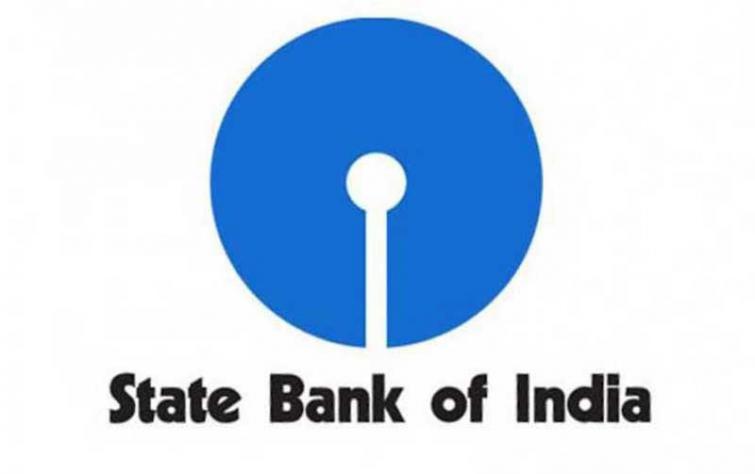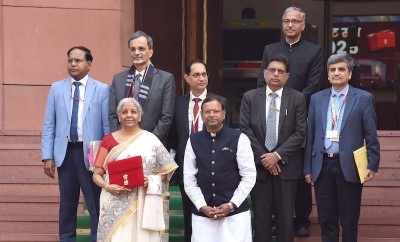 SBI
SBI
State Bank of India: Ecowrap - SRS report throws light on multiple facets of India's demography
The government has released the Sample Registration System (SRS) survey which is the largest demographic survey in the country mandated to provide annual estimates of fertility as well as mortality indicators at the State and National level.
Survey 2019 was conducted in 8844 sample units (Urban: 3884 & Rural: 4960), covering about 8.2 million sample population. The survey reveals some interesting results.
The report has been authored by Dr Soumya Kanti Ghosh, Group Chief Economic Adviser, State Bank of India.
First, the children in the age group 0-4 years and 0-14 years reside more in rural areas than in urban areas both for males and females
Second, a higher proportion of males and females in the working age group 15-59 live in urban areas as compared to rural areas.
However, the state-wise variation is quite evident. While 13 states have share of working population more than national average, 9 states have share below the average.
Most of the states where share is below national average (Bihar: 60.2 percent, MP: 63.8 percent, UP: 65.0 percent) are those from where labour migration is happening. Telangana and Andhra Pradesh have working population share of more than 71 percent.
Third, Elderly (age above 60 years) are evenly distributed with 11 states have 60+ population share more than national average and 11 states have less than national average. Four states (Kerala, TN, HP, Odisha) have old age population share of more than 10 percent while four states (Jharkhand, Bihar, Delhi, Assam) have 60+ share less than 6.5 percent.
Fourth, mean marriage age has declined marginally to 22.1 years in 2019 from 22.3 years in 2018. But it is still above the minimum marriage age for women which has been increased from 18 to 21 recently.
However, still 37 percent of females in India are married before the age of 21 years with the situation quite grave in some states.
In West Bengal, mean marriage age is only 21.0 years and around 50 percent of females got married before the age of 21 years.
With the increase in the legal marriage age, some of the states will be faced with a daunting task of altering the social and cultural behaviour of people.
We believe increasing the legal age has the potential to reduce India’s MMR and will lead to more females doing graduation and hence coming into labour force.
Another benefit is legal marriage age will become same for men and women.
In a consultation paper of reform in family law in 2018, the Law Commission argued that having different legal standards “contributes to the stereotype that wives must be younger than their husbands”.
Fifth, the Crude Birth Rate (CBR) has marginally declined to 19.7.
Bihar has the highest birth rate in rural areas (26.5) followed by Uttar Pradesh and Madhya Pradesh (26.4); whereas Uttar Pradesh has the highest birth rate in urban areas (22.3) followed by Bihar (21.2).
The lowest CBR was recorded in rural areas of Kerala (13.4).
Sixth, India’s sex ratio increased to 904 in 2019. Moreover, India's national Total Fertility Rate (TFR) has fallen to 2.1 for the first time in 2019 per woman and varies from 2.3 in rural areas to 1.7 in urban areas.
As TFR fell to replacement level, it indicates the growth of population is stabilising. Continuing to have a young population for 2-3 decades, along with population stabilisation, should give us a great opportunity for accelerated development — provided we invest in public health and education with skills.
Seventh, the crude death rate at all India level has declined significantly from 14.9 to 12.5 during 1971 to 1981 and thereafter from 9.8 to 6.0 during 1991 to 2019. The decline has been steeper in rural areas as compared to urban areas.
The trend is same in all major states, except for Kerala and West Bengal where urban death rate is higher than the rural death rate. Notably, male have higher death rate than females, overall as well as both in rural and urban areas.
State wise data shows that only two states, Bihar and Jharkhand have higher female death rate than male death rate.
Eighth, the infant mortality rate, which plays an important role in health planning, has shown a considerable decline from 129 per 1000 live births in 1971 to 110 in 1981 and from 80 in 1991 to 30 in 2019. Between 2007-09 and 2017-19 the average level of infant mortality has reduced by 40 percent to 31.8, with Delhi, Jammu & Kashmir, Himachal Pradesh, Tamil Nadu and Punjab registering more than 50 percent decline during the same period.
Age wise mortality distribution shows that States like Madhya Pradesh, Uttar Pradesh, Rajasthan, Bihar, Assam, Chhattisgarh and Jharkhand have mortality amongst the toddlers and infants (0-4 years) higher than the national average.
These states, particularly the rural areas have higher infant mortality rates, which calls for special attention by making policies directed at reducing the same.
Finally, if we look at the deaths where the deceased received medical attention (Government or private hospital) before death, the number has increased to 48.6 percent in 2019 compared to 47.8 percent in 2018.
Overall, 29.8 percent of the deaths occurred at Government Hospitals, with larger number in urban areas (35.7 percent of total deaths of those who received medical attention) compared to rural areas (27.7 percent). One of the major worries is higher share of about 18.3 percent deaths which were attended by untrained functionaries and others, with maximum share in Odisha (36 percent).
Support Our Journalism
We cannot do without you.. your contribution supports unbiased journalism
IBNS is not driven by any ism- not wokeism, not racism, not skewed secularism, not hyper right-wing or left liberal ideals, nor by any hardline religious beliefs or hyper nationalism. We want to serve you good old objective news, as they are. We do not judge or preach. We let people decide for themselves. We only try to present factual and well-sourced news.







